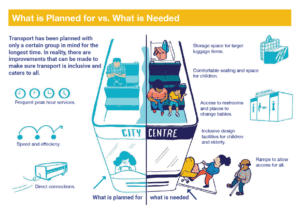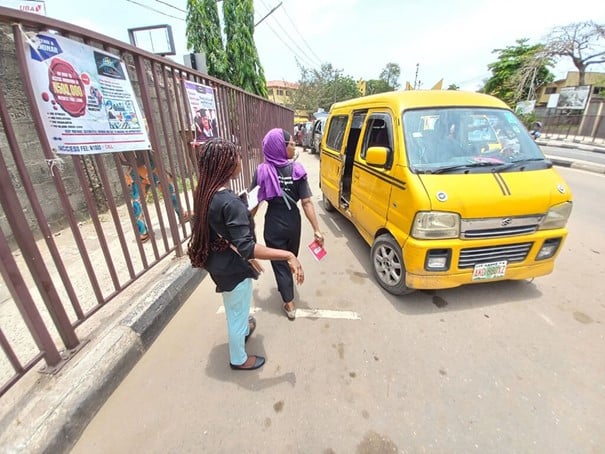In the world of feminism and research, a new term has emerged in recent years: “Data Feminism”, which often replaces the term “Gender Data”. The term has started trending after Catherine D’Ignazio and Lauren Klein’s new book. The fact is, ever since feminism has existed, so has Data Feminism. From the early suffragettes who meticulously gathered statistics on working conditions to advocate for labor reforms; to contemporary activists leveraging data to expose gender disparities in unpaid labor, healthcare access, and the wage gap the intersection of feminism and data analysis has been profound. These examples underscore the fundamental role that data has played in advancing feminist causes throughout history.
So, if data analysis has always been an essential part of feminism, why has it only recently become a hot topic? At its core, Data Feminism demands a critical interrogation of the notion of objectivity in all technical fields. It challenges the myth of neutrality, revealing how data, far from being impartial, is often shaped by underlying biases and power dynamics. In other words, feminism is already data science, but is data science feminist enough?
Transportation planners, geographers, urbanists, lawmakers, or anyone involved in city planning are acutely aware of how spatial arrangements shape material realities. Transportation is indispensable for the realization of nearly every fundamental right, facilitating access to healthcare, education, employment, nutrition, social interaction, and more. However, the decisions we make in transport planning inherently carry political weight, determining who within our communities can fully exercise these rights and who is relegated to the margins.
Data Feminism asserts that, all too often, the benchmarks for designing our environments —including transportation systems and cities — are set by a narrow standard: that of white, heterosexual, young adult, middle-class males. This narrow perspective perpetuates inequities and reinforces privilege, highlighting the urgent need for a more inclusive and intersectional approach to planning and policymaking.
For example, across the globe women’s transportation needs are often influenced by their caregiving responsibilities, a concept coined as ‘mobility of care’ by Inés Sánchez de Madariaga. This means that women travel is primarily oriented towards tasks such as escorting others, shopping for daily necessities, household maintenance, organization, administrative errands, and visits to take care of sick or elderly relatives. In contrast, men tend to undertake longer journeys, primarily using private cars, with their trips predominantly related to work. However, in data collection for transportation planning, this care aspect of travel is simply not counted, which means it’s not considered in the design of the space.

Seven Principles for Transportation Planners
While data feminism involves closing the gender data gap, it is more than just that. It is a perspective with which the researcher or practitioner conducts their work. It involves moving past the idea of being unbiased and recognizing the inherent political aspect of transportation. It means moving past binaries and the tendency to homogenize communities. Keeping in mind these seven principles might help us avoid perpetuating inequal design:
- Examine power: Who is/isn’t doing the transportation research? Whose goals are/aren’t being prioritized? Who am I imagining when I picture the world? Who benefits from my work and who is overlooked or actively harmed?
- Challenge power: Does my work strengthen existing power imbalances, or does it empower underrepresented communities?
- Elevate emotion and embodiment: What is my work counting as “valid/legitimate knowledge”? Do I believe there is a more proper or objective way to share data information? Is the way I share my information accessible to the communities it involves? Do I recognize the diverse ways in which transportation decisions impact people
- Rethink binaries and hierarchies: Am I inadvertently reinforcing binary distinctions or assumptions about gender, race, or other identities in my survey questions and my transportation planning? Do I disaggregate my data, in multiple levels or on the contrary, do I assume marginalized communities to be homogenous?
- Embrace pluralism: Am I centering within my work the perspectives of the involved, the local and the less heard? Is my research participatory or do I reproduce the idea that the more distant a data scientist is from their object of study the more objective the results are?
- Consider Context: Do I believe myself to be unbiased or do I recognize that all worm is political and embrace that reality? Do I think that the less disaggregated my data, the more equitable it is? Do I hold the common belief in data science that the numbers speak for themselves, or do I recognize that data sets are often influenced by power imbalances and misaligned collection incentives?
- Make Labor visible: Do I recognize unpaid care labor to be legitimate work, and do I take it into account in my research process with the communities and my collaborators? Do I recognize all parts of the data science process to be of value, particularly the one done my women and minoritized communities? Is there any other unrecognized labor that I’m not crediting?
In conclusion, the seven questions every transport planner should consider around data feminism provide a framework for critically assessing the intersection of gender, power, and data in transportation planning and urban development. The planning of transportation is a long process that involves multiple stakeholders and actors, but to be able to design the world we want we need to recognize the political world we inhabit accurately and intentionally. Data Science is a powerful tool for that purpose. Therefore, for anyone passionate about the transformative impact of transportation on lives, adopting a conscious feminist perspective in data research becomes a must. By incorporating these principles into their work, transport planners can not only address existing disparities but also contribute to reshaping the future of urban mobility through a lens of equity and social justice.
The seven principles for data feminism are based on the book Data Feminism (2020) by Catherine D’Ignazio and Lauren Klein.
Read more on data feminism:



